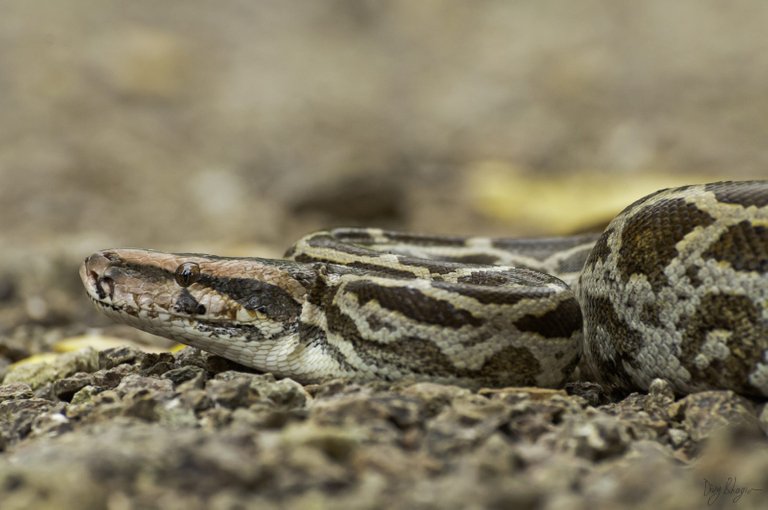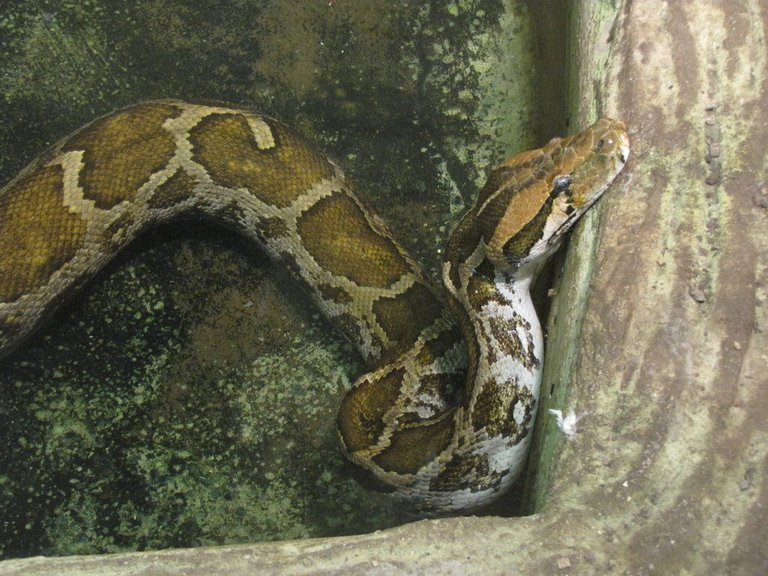
Habitat
Indian pythons are native to the dense forests of India, Sri Lanka, Pakistan and Nepal.
The Maryland Zoo in the United States has an Indian python called "Lucy", which is one of its most popular and fascinating animals.
Behavior
A python from India could be found on the ground or hanging from a tree branch, resting or waiting to ambush prey, and well camouflaged by its marks. Like most pythons and boas, these snakes are solitary animals that seek companionship only during the breeding season, and are only accompanied in pairs.
They are somewhat territorial, so they prefer to settle down and claim a favorite resting place.
Indian pythons hunt mainly at night, aided by heat detection pits in the upper and lower jaws. These organs are very sensitive to the slightest change in temperature and help determine the location of the hot blood dam.
Indian pythons, like other snakes, also use Quimiorrecepción to track prey and investigate their environment.
The snake clicks the tongue to collect chemical samples from the atmosphere and deliver them to a special organ on the roof of the mouth (Jacobson's organ), where they are analyzed.
The Pythons of India also, like other Pitons and Boas, are constrictors. After hitting quickly and capturing the prey in their mouth, they squeeze up suffocation and immobilization and then slowly swallow.
Pythons feed mainly on small mammals and birds. They don't require food often, and they can spend weeks or months between meals.

Distinctive Mark
Pythons are the oldest type of snake. All the species in this group have Spurs, tiny projections where their ancestors could have had legs once.
Pythons feed mainly on small mammals and birds. They don't require food often, and they can spend weeks or months between meals.
Reproduction
All pythons are oviparous, which means that they are reproduced by laying eggs. The female lays her eggs and then surrounds them with her coils and supports her head at the top, to keep them safe and warm. It is not usual for a snake to incubate its eggs, but many pitons do, and the python females of India do so for a period of two to three months.
Baby pythons burst from their egg shells with the help of an egg tooth, a small sharp projection, which falls shortly after hatching. Once they go out into the world, young specimens quickly become independent individuals.
Predators
Pythons and Boas are mainly based on camouflage to avoid being detected by predators. They are very good to remain still or withdraw from sight, in order to avoid being detected.
Contrary to popular myths, pythons and boas are snakes that seldom attempt to roll around a potential predator. Instead, they can discourage an aggressor from inflating and deflating their bodies, and acting to intimidate as much as possible.
Indian pythons have few or no known predators other than men.
Conservation
species of python, including that of India, have long been hunted by their skins, which are used in fashion accessories, and trapped for the trade of exotic pets.
People also tend to kill big snakes, like the python of India, out of fear. In addition, this species of snake is threatened by the reduction of habitat, caused by the deforestation
For all this, this snake is considered a vulnerable species and is now protected, along with other species of Python, which prohibits the trade of live specimens and products derived from this animal.
Poaching remains a major threat, however, India has established many wildlife reserves, where Indian pythons are technically protected. However, the borders of these reserves are difficult to patrol.